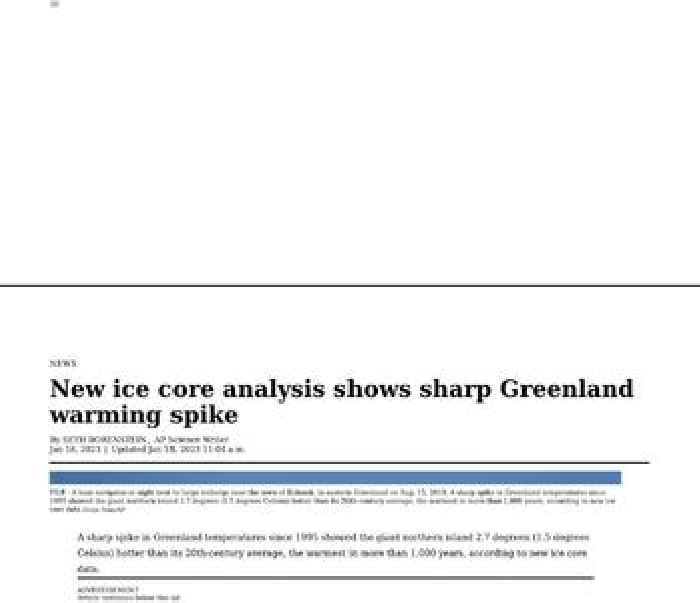
New ice core analysis shows sharp Greenland warming spike

A sharp spike in Greenland temperatures since 1995 showed the giant northern island 2.7 degrees (1.5 degrees Celsius) hotter than its 20th-century average, the warmest in more than 1,000 years, according to new ice core data.
Until now Greenland ice cores -- a glimpse into long-running temperatures before thermometers -- hadn’t shown much of a clear signal of global warming on the remotest north central part of the island, at least compared to the rest of the world. But the ice cores also hadn’t been updated since 1995. Newly analyzed cores, drilled in 2011, show a dramatic rise in temperature in the previous 15 years, according to a study in Wednesday’s journal Nature.
“We keep on (seeing) rising temperatures between 1990s and 2011,” said study lead author Maria Hoerhold, a glaciologist at the Alfred Wegener Institute in Germany. “We have now a clear signature of global warming.”
It takes years to analyze ice core data. Hoerhold has new cores from 2019 but hasn’t finished studying them yet. She expects the temperature rise to continue as Greenland's ice sheet and glaciers have been melting faster recently.
“This is an important finding and corroborates the suspicion that the ‘missing warming’ in the ice cores is due to the fact that the cores end before the strong warming sets in,” said climate scientist Martin Stendel of the Danish Meteorological Institute, who wasn’t part of the research.
The ice cores are used to make a chart of proxy temperatures for Greenland running from the year 1000 to 2011. It shows temperatures gently sloping cooler for the first 800 years, then wiggling up and down while sloping warmer until a sharp and sudden spike hotter from the 1990s on. One scientist compared it to a hockey stick, a description used for other long-term temperature...
